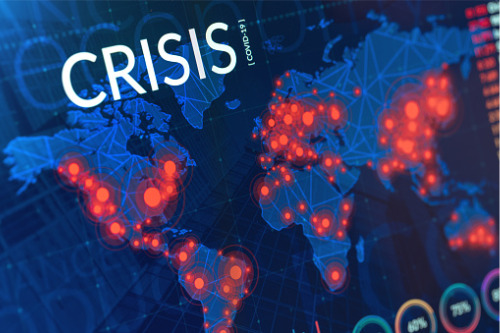

The COVID-19 pandemic is the greatest threat to global financial stability in 2021, according to the annual Systemic Risk Barometer published by the Depository Trust and Clearing Corporation (DTCC).
Close to one-third of respondents cited the pandemic as the number one risk, while 67% included it in their top five.
As for how the pandemic affects financial stability, 68% of respondents said that equity valuations are stretched, reflecting unrealistic expectations about the economy’s recovery. A similar proportion of respondents (67%) believe that fiscal stimulus measures, while effective at preventing a short-term economic collapse, could have unintended consequences that are detrimental to financial stability in the longer term.
“Banks and other financial institutions play a key role in supporting the recovery from COVID-19 by extending credit and providing liquidity to help consumers and businesses get through the pandemic,” Mike Leibrock, managing director, chief systemic risk officer and head of counterparty credit risk at DTCC, told Corporate Risk and Insurance.
“With that said, they also have a responsibility to carefully manage the associated risks in order to safeguard financial stability in the longer term.”
More than half (55%) of respondents expect higher-than-average market volatility in 2021. Meanwhile, 42% expect systemic risk and financial instability to worsen in 2021 compared to 2020.
“It is safe to say that 2020 can be classified as a year that defied predictions. As the coronavirus spread around the world in March, we saw unprecedented volatility and trade volumes across nearly every asset class,” commented Andrew Gray, group chief risk officer at DTCC. “Despite these challenging conditions, financial market infrastructures around the world have proved resilient, demonstrating their crucial role in safeguarding financial stability.”
With COVID-19 having such a huge impact, it is necessary that the global financial system is able to build resilience against similar shocks, which may include the emergence of another pandemic.
“A united effort across organizations will continue to minimize the impact of risks, such as infectious disease, on critical business services and market stability,” said David LaFalce, managing director, global business continuity & resilience, DTCC. “In fact, supporting strategies will be front and center for companies in the years to come to ensure effective funding and resources to properly prepare and respond to such events. The preparations that stemmed from the sector-wide pandemic exercise conducted in 2007 were helpful in maintaining stability, but the broad impact of this pandemic will affect not only the way we respond in the future but how we work, how we adapt our culture, and how we invest for the foreseeable future.”
Other top risks
Cyber risk was identified in the top five by 54% of respondents, down from 63% in the previous year’s survey. According to DTCC, several respondents noted that cyberattacks are becoming increasingly sophisticated, adding that cyber risk is “always an underlying threat.” A significant number also said that cyber risk is increasing due to more remote working environments as a result of the pandemic.
Geopolitical risk was another top risk, with half of respondents saying the results of the US presidential election was in their top five risks. The outcome is expected to directly impact trade, fiscal and monetary policies for the next few years. Geopolitical risks and trade tensions were cited as a top five risk by 45% of respondents this year.
Global debt is a significant point of concern, with growing attention towards the risk created by excessive global debt, with 33% of respondents citing this as a top five risk, up from 24% last year.
According to Leibrock: “Global debt levels, which were already elevated prior to the coronavirus outbreak, have increased due to a series of stimulus measures and monetary policy accommodations. While these actions successfully mitigated some of the pandemic’s short-term economic impact, the sustainability of the resulting high debt levels could present challenges in the future.”
